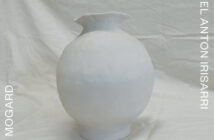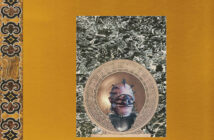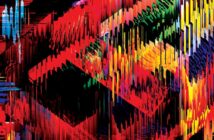
There are many poems that should not be put to music. But Allen Ginsberg’ Howl is not one of them. Just before his death Ginsberg had a minor hit with his Ballad of the Skeletons with the help of Paul McCartney and Phillip Glass, yet this album isn’ spoken word put to music, and Ginsberg’ only contribution here is his text.
Of course Howl, released in 1956 was the Beat poet’s masterwork, and the one poem for which he is best remembered. It’s the first track on Italian collective Living Music’ first and only album release in 1972. Living Music were an open band with participants at all different ages and levels coming and going to create music. It’s an album that not unexpectedly covers a multitude of styles, everything from avant jazz to Californian folk of the late 60′, your earnest weed addled Crosby Stills and Nash, to exotic eastern instrumentation and chants – at times even all these elements are mixed together in the same song, yet in the main they’re discrete entities.
In the liner notes they state “Living music doesn’ want to make a sort of music which could be classified under a denomination,†before suggesting that by moving immediately from guitar to sitar they’re breaking down genre and cultural barriers to form a new kind of music, a new form of communication.
They’re lofty ideals, and to some extent To Allen Ginsberg can be dismissed as an optimistic hippy freak-out album, yet that would be a disservice as the music is endlessly fascinating, not just in terms of its diversity, but also complexity. Evolving from the spiritual to the protest, from the avant garde to the psychedelic is no mean feat, and to do so in celebration of a famous Beat poet is nothing short of extraordinary. Or extraordinarily strange.
It’s a band that developed from lounge room jam sessions at husband and wife Umberto Santucci and Gianfranco Montedoro’ house. Montedoro, who sings on this album also played with progressive rock outfit Brainticket and would release a solo album a couple of years later with a band featuring members of Rome based classical influenced outfit Murple. You can really sense the jam element in the music, it sounds like people were picking up instruments as they went, everything from sitar to vibraphone, to saxophone, mandolin, keyboards, tabla, and all manner of other ethnic percussion.
The highlight though is Howl ,which is 70′ psychedelic hippy funk, with cyclical guitar, groovy bass and urgent bongos that makes it come across like some kind of cop show theme that’s ingested too much grass. For further information see the cover of this album. The song is tension and release with Montedoro’ earnest female vocals reciting Ginsberg’ incendiary words, over a repetitive protest funk before delicate guitar melodies and droning tenor sax offer a time out, an evening in the amber lounge if you will. Ultimately once Ginsberg’ words are worn out and there’ a chorus of wondrous chanting voices and the song descends into a gentle low-key funky soul workout. Remarkable.
This is a total freak oddity, a concept album from 1972 Italy made by a musical social experiment with tunes that evolve through psychedlelia, the esoteric, acid folk, world and experimental jazz. It’s a moment in time, and though that moment has well and truly passed, the ambitious confluence of ideas, hopes and musical genres has resulted in a compelling work of eccentric head scratching genius.



